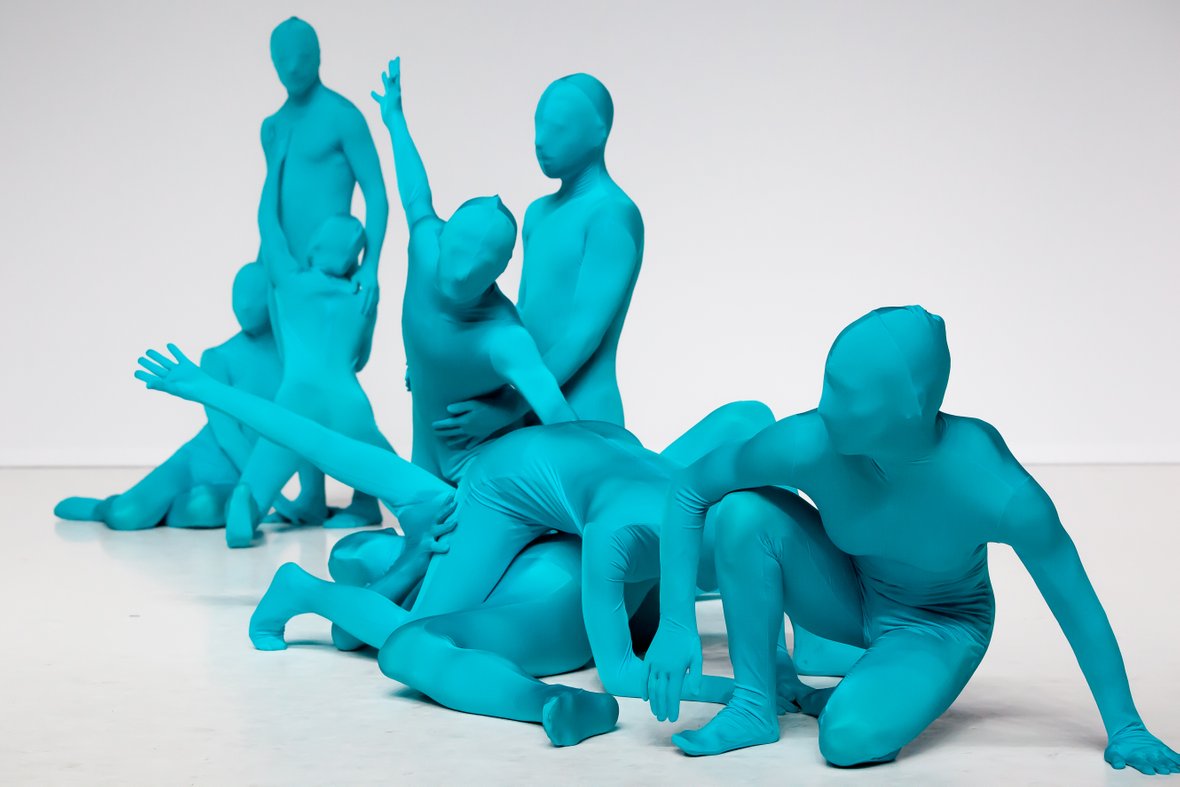
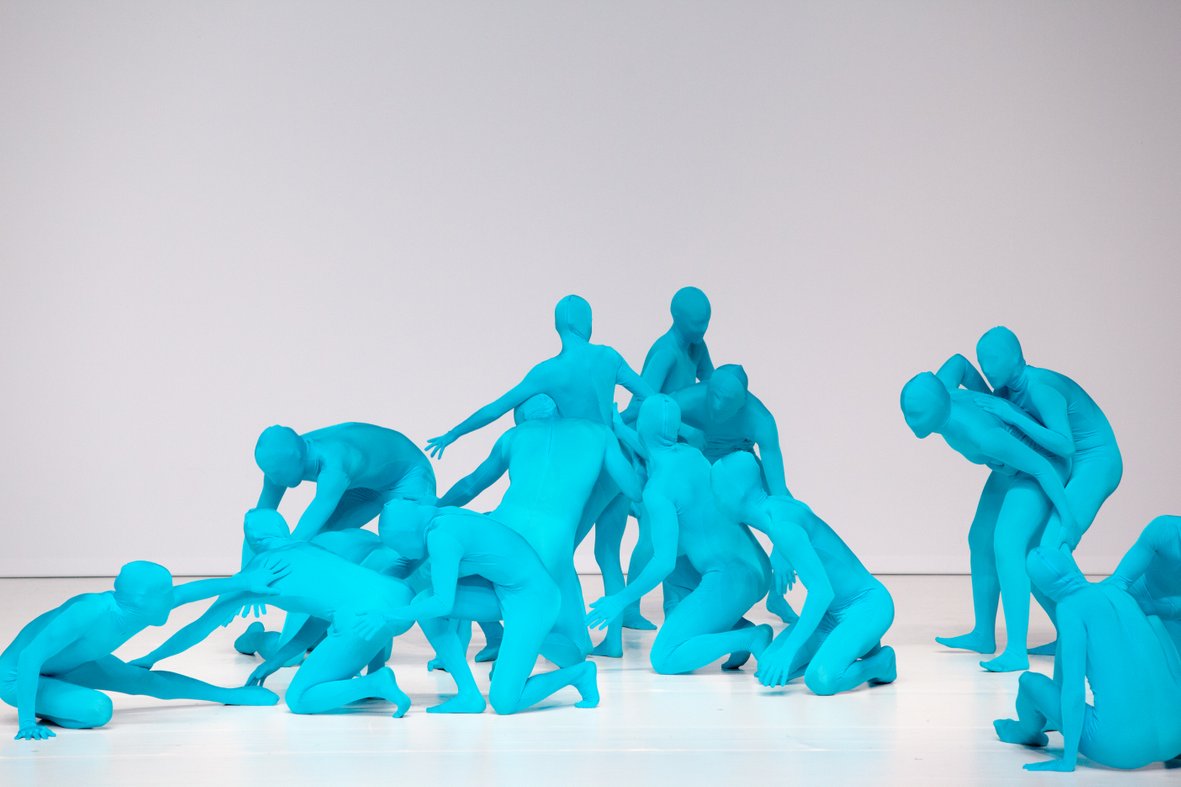
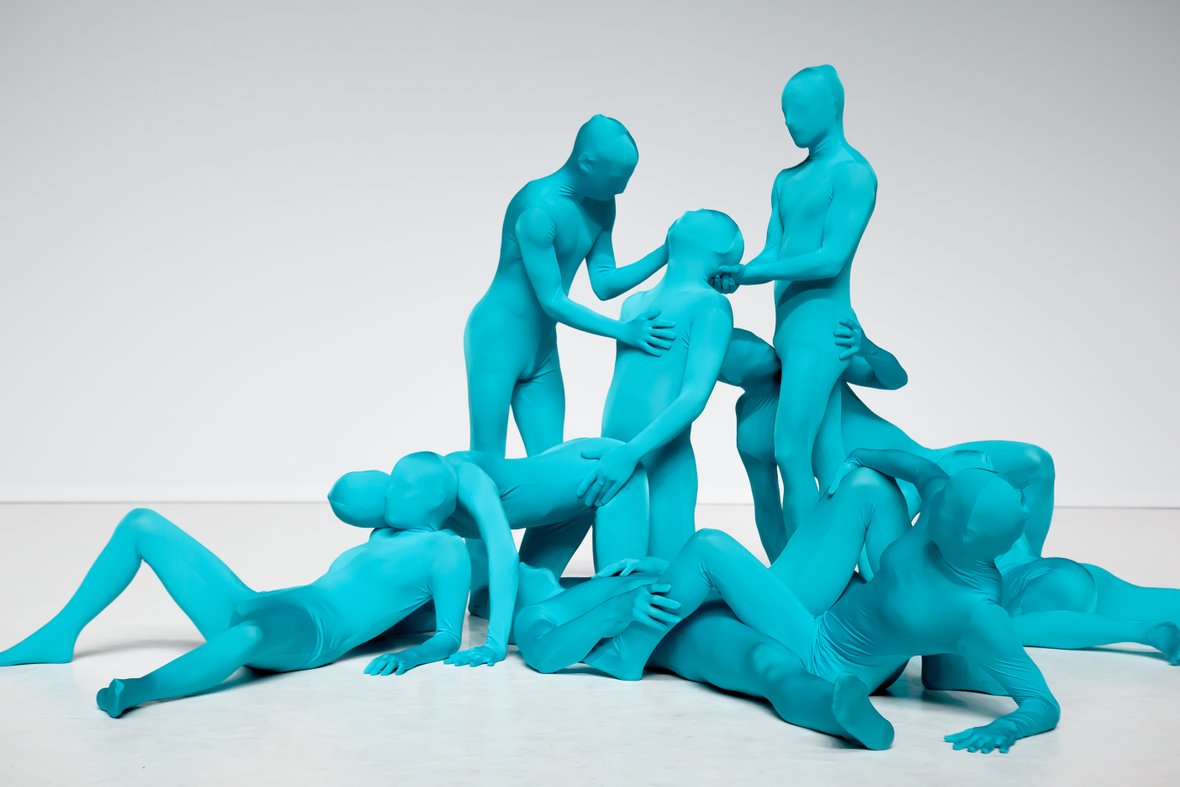
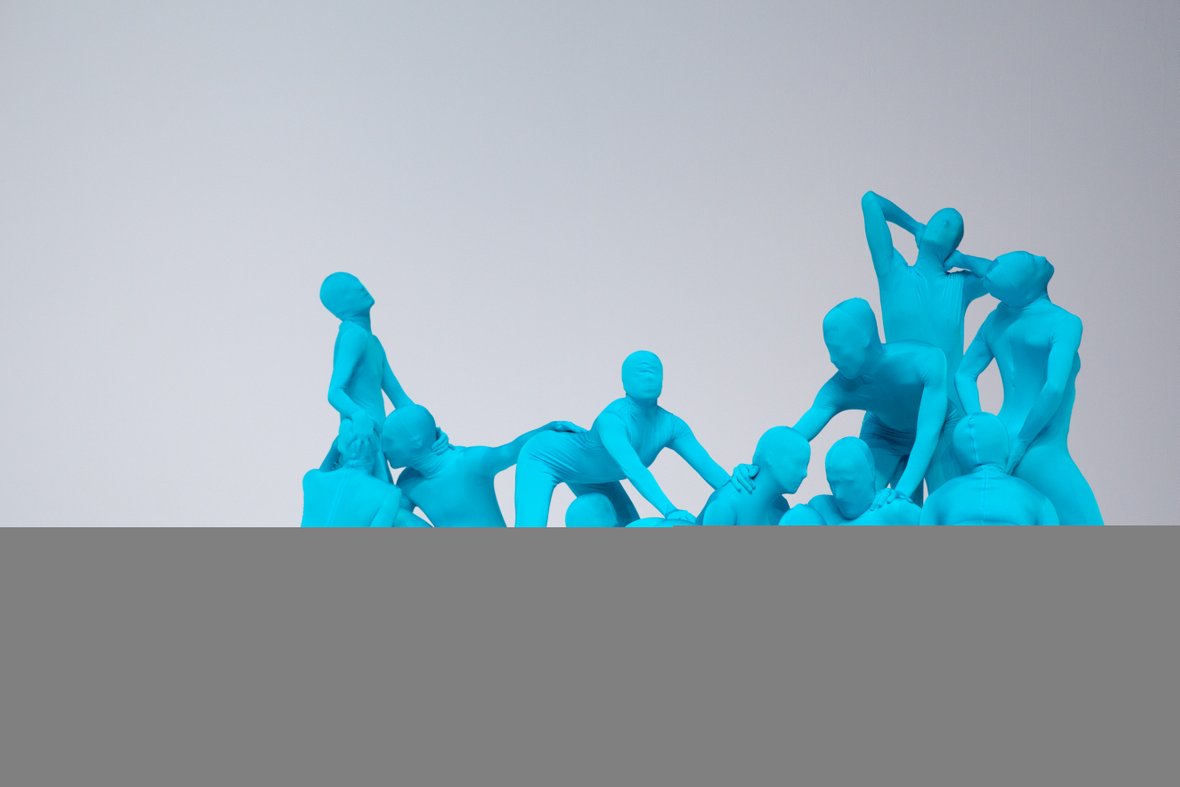
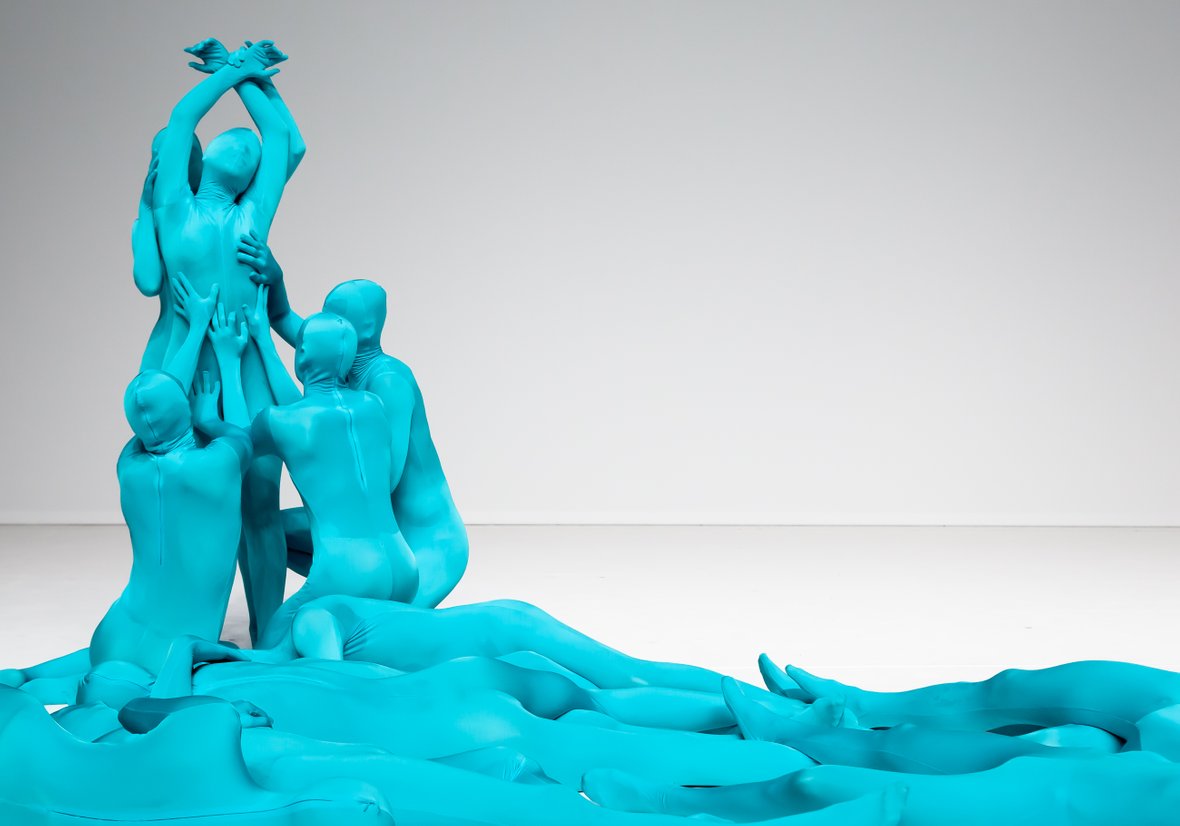
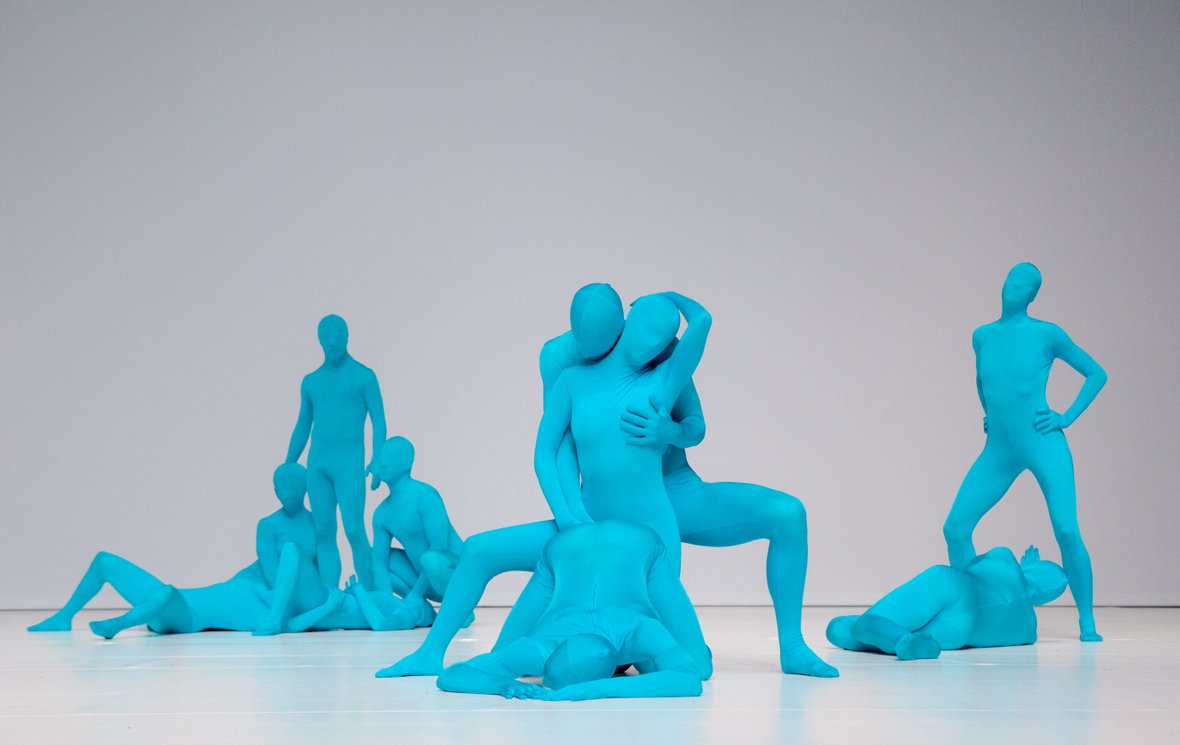
Concept & Choreography Mette Ingvartsen
Set / Light / Photography Jens Sethzman
We are constantly surrounded by images of sexual bodies. Commercials, Internet, cinema, magazines – all kinds of media – expose the intimate and the erogenous. Flesh, fluids, skin, tits, and asses no longer belong to late hours in a dark joint somewhere around the corner, but to our daily life impressions. Operating in public spaces and behind closed bedroom doors, erotic images, texts, and sounds influence the way we move. The option to switch off the stimulation of our bodily desires no longer exists. Pleasure has become a must.
to come (extended) explores indistinction between private and public space regarding sexual representation. In a performance that disrupts erotic orders, a group of 15 performers questions the notion of individual sexual freedom by working on orgiastic relations. The bodies of the performers merge into a collective group formation by making their surfaces indistinguishable from one another. Working directly on how bodies can physically connect, mechanisms of desire are rethought by experimenting with sexual, orgasmic and social expressions. The performance challenges the use of climactic and orgasmic structures in theater by proposing extended states of pleasures in which excitement is both excessively slowed down and energetically sped up. The enjoyment of abstract colors and shapes mix with a sensation of rhythmic pulsing produced by sensual figures, while social structures come undone.
to come (extended) is based on an earlier work for five dancers made by Mette Ingvartsen in 2005. The reason for revisiting this choreography with a larger performing cast lies in Ingvartsen’s wish to refract the current politics of sex through the joyful tone of the perspectives of the 2005 piece. Furthermore, to come (extended) joins the series of her recent works (2012-17) – 69 positions, 7 pleasures, and 21 pornographies – dealing with the conjuncture of sexual politics, private and public spheres, and experience economy.